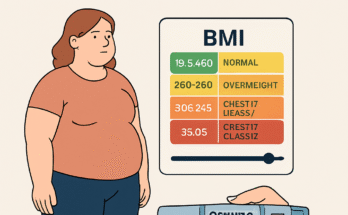As a weight loss specialist researching Ozempic, I often hear patients ask, “When can I restart Ozempic after surgery?” It’s a question that frequently appears in Google searches, reflecting the uncertainty many face when balancing surgical recovery with their diabetes or weight loss treatment. Surgery, whether planned or urgent, can disrupt your medication routine, and Ozempic (semaglutide) requires careful timing due to its effects on digestion and blood sugar. In my practice, I’ve guided patients through this process, ensuring they resume Ozempic safely to maintain their health goals. In this guide, I’ll explain when and how to restart Ozempic after surgery, what precautions to take, and why coordination with your healthcare team is essential, drawing from the latest research and my experience.
What Is Ozempic and Why Pause It Before Surgery?
Ozempic is a once-weekly injectable medication primarily approved by the FDA for managing type 2 diabetes and reducing cardiovascular risk in those with diabetes and heart disease. Its active ingredient, semaglutide, is a GLP-1 receptor agonist that regulates blood sugar, slows gastric emptying, and reduces appetite. These effects make it effective for diabetes control and weight loss, with clinical trials like the STEP programme showing an average 14.9% body weight loss over 68 weeks. A higher-dose version, Wegovy, is approved for chronic weight management.
Ozempic is often paused before surgery because it slows gastric emptying, which can increase the risk of aspiration—where stomach contents enter the lungs—during anesthesia. The FDA’s safety information advises stopping Ozempic at least one week before procedures requiring anesthesia to minimize this risk. In my practice, I’ve seen patients pause Ozempic for surgeries ranging from minor procedures like dental extractions to major ones like bariatric surgery, with the timing of resumption depending on recovery.
When Can You Restart Ozempic After Surgery?
One of the top search queries is, “When can I restart Ozempic after surgery?” The timing depends on the type of surgery, your recovery, and your doctor’s guidance. General recommendations, based on clinical guidelines and my experience, are as follows:
- Minor surgeries (e.g., dental procedures, cataract surgery): You may restart Ozempic 1-2 weeks post-surgery, provided you’re eating normally, have no nausea or vomiting, and your surgeon approves. The one-week pause before surgery ensures minimal gastric content risk.
- Major surgeries (e.g., bariatric, orthopedic, or abdominal surgery): Restarting may take 2-4 weeks or longer, depending on recovery. Bariatric surgery, for instance, alters digestion, so resuming Ozempic requires careful monitoring to avoid side effects like nausea.
- Surgeries with prolonged fasting or digestive issues: If you’re unable to eat solid foods or have complications like ileus (bowel obstruction), restarting may be delayed until digestion normalizes, often 4-6 weeks.
In my practice, I’ve found that most patients can resume Ozempic once they’re tolerating a regular diet and their surgical team confirms it’s safe. The FDA’s approval data for semaglutide supports its use in stable patients, but post-surgical recovery requires individualized timing.
Factors Influencing When to Restart Ozempic
Patients often ask, “Why can’t I restart Ozempic sooner?” Several factors influence the timing, based on clinical data and my observations:
- Type of surgery: Procedures involving the digestive tract (e.g., gastric bypass) require longer delays due to altered gastric emptying, while non-digestive surgeries (e.g., knee replacement) may allow earlier resumption.
- Recovery status: You should be able to eat and drink normally without nausea, vomiting, or significant pain. Post-surgical complications like infections or slow healing may delay restarting.
- Blood sugar control: For diabetic patients, restarting Ozempic too soon could cause hypoglycemia if other medications (e.g., insulin) aren’t adjusted. Your doctor will monitor glucose levels.
- Anesthesia effects: Residual anesthesia effects or post-operative medications (e.g., opioids) can slow digestion, increasing the risk of Ozempic-related side effects like nausea.
- Dose level: If you were on a higher dose (e.g., 1 mg or 2 mg), your doctor may recommend restarting at a lower dose (0.25 mg) to minimize side effects post-surgery.
I always emphasize to my patients that restarting Ozempic is a decision made with your surgical and primary care teams, tailored to your unique recovery.
How to Safely Restart Ozempic After Surgery
For those searching, “How do I restart Ozempic after surgery?” I recommend these steps, drawn from my work with patients:
- Consult your healthcare team: Before resuming, get clearance from your surgeon and primary care doctor or endocrinologist. They’ll assess your recovery and adjust your dose if needed.
- Start low if advised: If you’ve been off Ozempic for several weeks, your doctor may suggest restarting at 0.25 mg for 4 weeks to reduce side effects like nausea, even if you were on a higher dose before.
- Monitor blood sugar: For diabetic patients, check glucose levels regularly when restarting to avoid hypoglycemia, especially if other medications have changed post-surgery.
- Watch for side effects: Nausea, vomiting, or abdominal pain may be more pronounced post-surgery. Report these to your doctor immediately.
- Resume on schedule: Restart on your usual injection day (e.g., every Monday) to maintain consistency. If you’ve missed multiple doses, your doctor will guide you on timing.
In my experience, patients who restart Ozempic gradually and stay in close contact with their healthcare team have the smoothest transition back to treatment.
Precautions When Restarting Ozempic
Restarting Ozempic requires caution to avoid complications. I advise my patients to:
- Avoid restarting if nauseous or vomiting, as this could indicate unresolved surgical issues or intolerance to Ozempic.
- Stay hydrated, especially if you’ve had gastrointestinal surgery, as Ozempic can worsen dehydration from side effects like diarrhea.
- Coordinate with anesthesiologists if you have follow-up procedures, as Ozempic may need to be paused again.
- Monitor for hypoglycemia, particularly if you’re on insulin or sulfonylureas, as Ozempic enhances insulin release.
These precautions help ensure Ozempic supports your health without interfering with surgical recovery.
Supporting Ozempic with Lifestyle Changes
Ozempic is most effective when paired with healthy habits. In my practice, patients who combine it with a balanced diet—rich in vegetables, lean proteins, and whole grains—and regular exercise (150 minutes of moderate activity weekly) see better blood sugar control and weight loss. Post-surgery, start with gentle activities like walking and a light diet, gradually returning to your routine as recovery allows. These habits support Ozempic’s effects and help maintain your health goals during and after the restart process.
Restarting Ozempic After Surgery: A Summary
The table below outlines key factors for restarting Ozempic post-surgery:
| Factor | Impact on Restart | Recommendation |
| Type of Surgery | Digestive surgeries delay restart; minor ones allow sooner | Wait 1-4 weeks, per surgeon’s advice |
| Recovery Status | Normal eating and no nausea needed | Confirm with doctor before resuming |
| Blood Sugar | Risk of hypoglycemia if not monitored | Check glucose levels regularly |
| Dose Level | Higher doses may need lower restart dose | Start at 0.25 mg if advised |
Frequently Asked Questions
When can I restart Ozempic after surgery?
Typically 1-4 weeks, depending on the surgery and recovery. Minor surgeries may allow restarting after 1-2 weeks; major ones may take longer.
Can I take semaglutide after surgery?
Can I take semaglutide after my tummy tuck, liposuction, or another cosmetic surgery? Yes, you can take GLP-1 medications after cosmetic surgery. However, weight loss will affect the results of any cosmetic surgery, so we recommend waiting to undergo your chosen procedure after you reach a weight you are happy with
When can I go back on GLP-1 after surgery?
When can I resume my GLP-1 diabetes or weight loss medication? Typically, you can resume taking the medication after your surgery or procedure on the day it occurs. That means you won’t miss a dose if you are taking the drug daily.
Can I restart Ozempic after 2 weeks?
If you have skipped your Ozempic for two weeks or more, I would recommend discussing with your physician the plan for restarting.
Will stopping Ozempic for surgery affect my progress?
A short pause (1-4 weeks) is unlikely to significantly impact long-term blood sugar or weight loss, especially with lifestyle support.
Conclusion
Restarting Ozempic after surgery requires careful timing, typically 1-4 weeks post-procedure, depending on the surgery type and your recovery. In my work as a weight loss specialist, I’ve seen patients successfully resume Ozempic by working closely with their surgical and primary care teams, starting at a lower dose if needed, and monitoring for side effects. With costs of $900-$1,300 monthly without insurance, planning your restart with your healthcare provider is key to managing expenses and health goals. Pairing Ozempic with a healthy diet and exercise supports its benefits during recovery. If you’re preparing for surgery or unsure about restarting Ozempic, talk to your doctor to create a tailored plan for a safe return to treatment.

Emily Harper is a board-certified nurse practitioner and certified obesity medicine specialist with a strong clinical background in metabolic health and GLP-1 therapies. With years of frontline experience managing patients on Ozempic, she brings both scientific knowledge and real-world insight to her writing.




